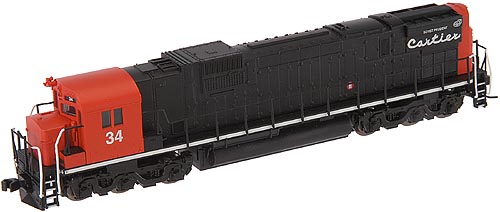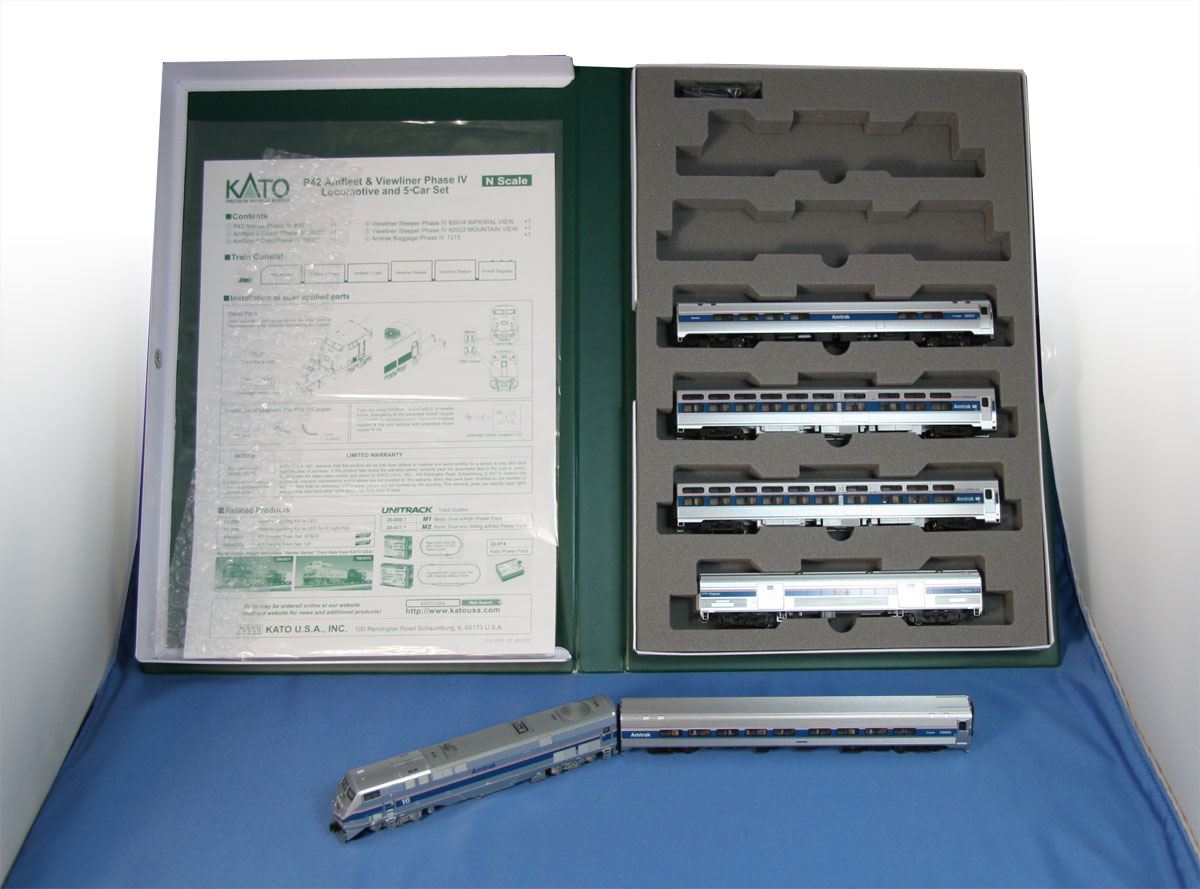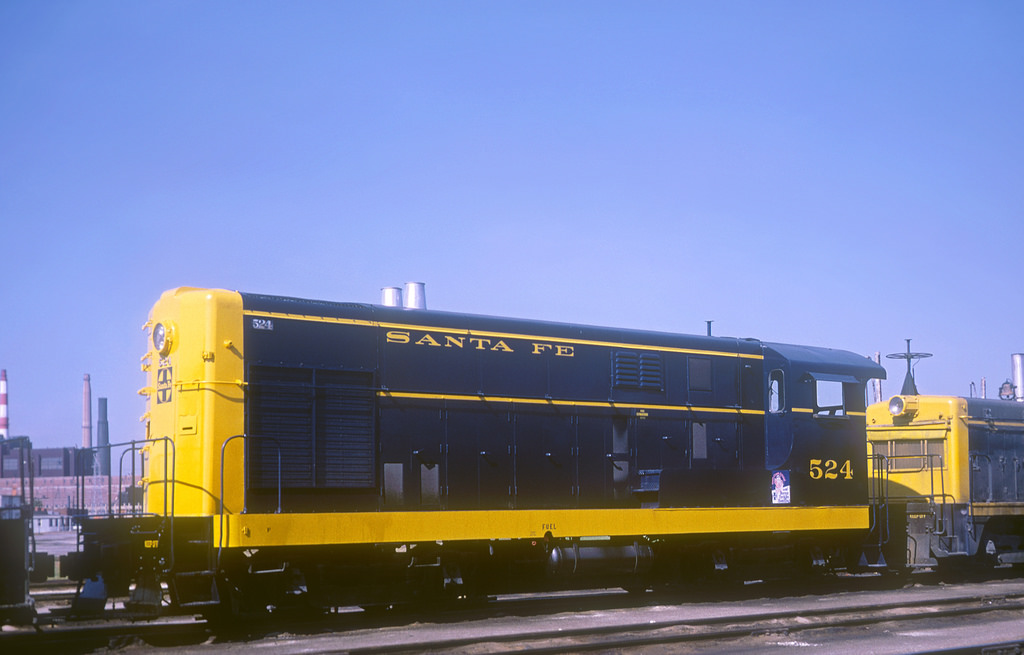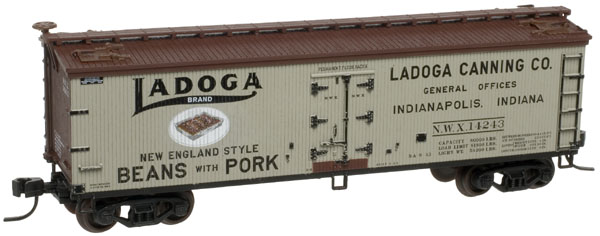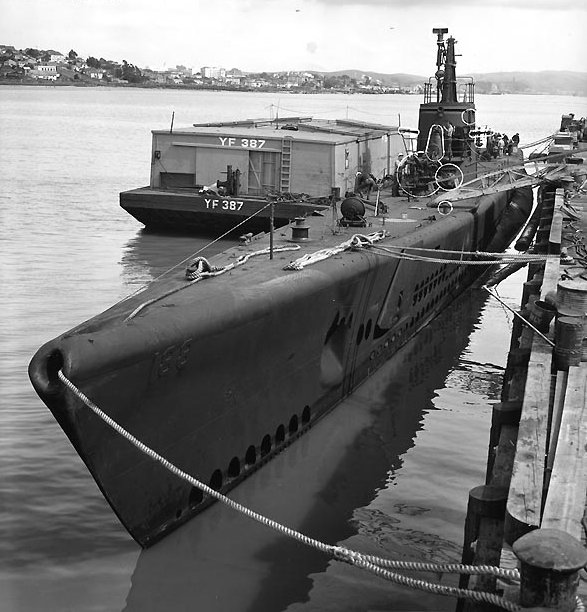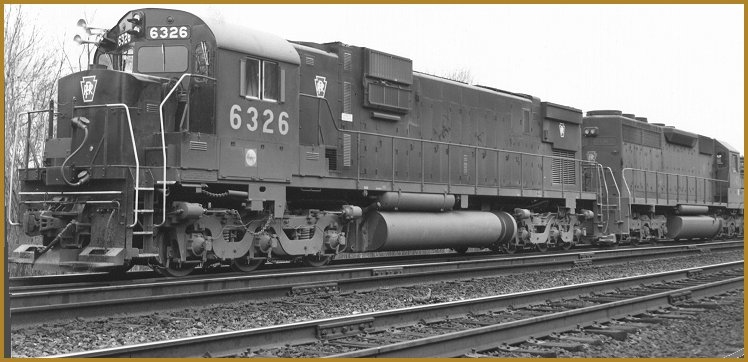Model Information: The Atlas Alco C-628 and C-630 share the same internal mechanisms and have very similar shells. They were introduced in 2004 and are typical modern Atlas locomotives. The mechanisms feature a split-frame design, blackened low-profile wheels LED lighting, and Accumate couplers.
The engines run smoothly and quietly and can easily pull 30 or more cars on an even grade. The shell detail is quite good including 'F' and 'R' indicators for normal operating direction.
The engines run smoothly and quietly and can easily pull 30 or more cars on an even grade. The shell detail is quite good including 'F' and 'R' indicators for normal operating direction.
Prototype History: The ALCO Century 630 was a six-axle, 3,000 hp (2.2 MW) diesel-electric locomotive built between 1965 and 1967. It used the ALCO 251 prime mover. 77 were built: 3 for Atlantic Coast Line Railroad, 4 for Chesapeake and Ohio Railway, 8 for Louisville and Nashville Railroad, 10 (with high noses) for Norfolk and Western Railway, 15 for Pennsylvania Railroad, 12 for the Reading Company, 15 for Southern Pacific Railroad and 10 for Union Pacific Railroad.
Montreal Locomotive Works produced a C-630M variant of the C-630, with 4 for British Columbia Railway, 8 for Canadian Pacific Railway and 44 for Canadian National. MLW M-630s were built by Montreal Locomotive Works from 1969 to 1973: 29 for CPR, 26 for BCR, and 20 for Ferrocarriles Nacional de Mexico (N de M). Eight of the BCR locomotives were designated M-630(W) and were built with a wide-nosed cab, known as the "Canadian" or "safety" cab. The latter two models, along with the nearly identical MLW M-636, had more in common with the ALCO C-636 than the C-630, and all MLW versions rode on high-adhesion trucks cast by Dofasco.
In January 1975, four Chesapeake and Ohio Railway locomotives were sold to Robe River Iron Associates in the Pilbara region of Western Australia. One was destroyed in an accident in February 1979, with the remaining three rebuilt by A Goninan & Co, Perth as CM40-8s in the early 1990s.
Three intact ALCO C-630s exist, Norfolk and Western 1135 at the Virginia Museum of transportation in Roanoke, Virginia. Reading 5308 at the Reading Company Technical and Historical Society in Hamburg, Pennsylvania. Union Pacific 2907 at the Arkansas Railroad Museum in Pine Bluff, Arkansas. Several M-630s exist. One is owned by the Western New York and Pennsylvania Railroad (WNYP), and two by Vintage Locomotive. CP M-630 #4563 is in operational condition at Exporail in St. Constant, Quebec. WNYP also has an MLW C-630M bought from the Arkansas and Missouri Railroad.
From Wikipedia
Montreal Locomotive Works produced a C-630M variant of the C-630, with 4 for British Columbia Railway, 8 for Canadian Pacific Railway and 44 for Canadian National. MLW M-630s were built by Montreal Locomotive Works from 1969 to 1973: 29 for CPR, 26 for BCR, and 20 for Ferrocarriles Nacional de Mexico (N de M). Eight of the BCR locomotives were designated M-630(W) and were built with a wide-nosed cab, known as the "Canadian" or "safety" cab. The latter two models, along with the nearly identical MLW M-636, had more in common with the ALCO C-636 than the C-630, and all MLW versions rode on high-adhesion trucks cast by Dofasco.
In January 1975, four Chesapeake and Ohio Railway locomotives were sold to Robe River Iron Associates in the Pilbara region of Western Australia. One was destroyed in an accident in February 1979, with the remaining three rebuilt by A Goninan & Co, Perth as CM40-8s in the early 1990s.
Three intact ALCO C-630s exist, Norfolk and Western 1135 at the Virginia Museum of transportation in Roanoke, Virginia. Reading 5308 at the Reading Company Technical and Historical Society in Hamburg, Pennsylvania. Union Pacific 2907 at the Arkansas Railroad Museum in Pine Bluff, Arkansas. Several M-630s exist. One is owned by the Western New York and Pennsylvania Railroad (WNYP), and two by Vintage Locomotive. CP M-630 #4563 is in operational condition at Exporail in St. Constant, Quebec. WNYP also has an MLW C-630M bought from the Arkansas and Missouri Railroad.
From Wikipedia
Road Name History: 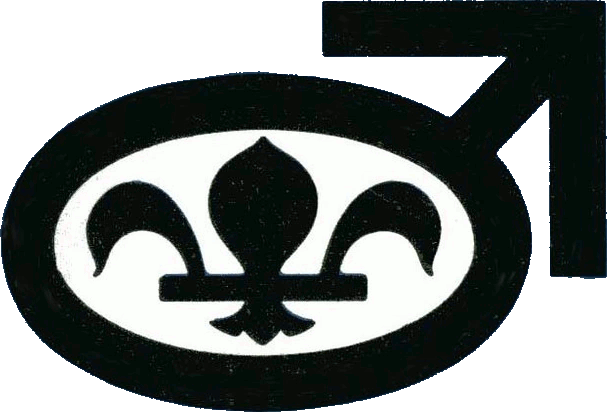 Chartered in 1957 by the US Steel owned Quebec Cartier Mining Company, the Cartier was completed in 1960 between Port Cartier on the north bank of the St. Lawrence River and Lac Jeannine, Quebec, 193 miles to the north.
Chartered in 1957 by the US Steel owned Quebec Cartier Mining Company, the Cartier was completed in 1960 between Port Cartier on the north bank of the St. Lawrence River and Lac Jeannine, Quebec, 193 miles to the north.
Traffic was iron ore from Lac Jeannine to the docks on the St. Lawrence. By 1972, the iron began to play out at Lac Jeannine so the line was extended to Mont Wright where there is a much larger iron deposit. Total mileage is now 260 (putting it between Green Bay & Western and Clinchfield in relative size.)
The Cartier (pronounced the same as the high end jeweler Cartier) has no direct connection to the rest of the North American rail network. New equipment must be delivered by ship over the St. Lawrence from Metane.
The line opened with GP9’s and RS18’s doing the honors. These were later joined by ten C630’s (originally built for Union Pacific) that had been sold to and transferred from sister road Duluth Missabe & Iron Range. By the early 90s, traffic had grown to the point that a fleet of 55 locomotives (over half were C636s and the Canadian equivalent M636,) and 1400 cars were required. Most of the 636s have recently been replaced by fewer but bigger AC4400CW’s and ES44’s. Trains are typically 150 cars long and as few as 90 cars in the winter. Southbound (loaded) trains always hold the main, forcing the empty trains into the sidings.

Traffic was iron ore from Lac Jeannine to the docks on the St. Lawrence. By 1972, the iron began to play out at Lac Jeannine so the line was extended to Mont Wright where there is a much larger iron deposit. Total mileage is now 260 (putting it between Green Bay & Western and Clinchfield in relative size.)
The Cartier (pronounced the same as the high end jeweler Cartier) has no direct connection to the rest of the North American rail network. New equipment must be delivered by ship over the St. Lawrence from Metane.
The line opened with GP9’s and RS18’s doing the honors. These were later joined by ten C630’s (originally built for Union Pacific) that had been sold to and transferred from sister road Duluth Missabe & Iron Range. By the early 90s, traffic had grown to the point that a fleet of 55 locomotives (over half were C636s and the Canadian equivalent M636,) and 1400 cars were required. Most of the 636s have recently been replaced by fewer but bigger AC4400CW’s and ES44’s. Trains are typically 150 cars long and as few as 90 cars in the winter. Southbound (loaded) trains always hold the main, forcing the empty trains into the sidings.
Brand/Importer Information: In 1924 Stephan Schaffan, Sr. founded the Atlas Tool Company in Newark, New Jersey. In 1933 his son, Stephan Schaffan, Jr., came to work for his father at the age of sixteen. Steve Jr. built model airplanes as a hobby and frequented a local hobby shop. Being an enterprising young man, he would often ask the owner if there was anything he could do to earn some extra spending money. Tired of listening to his requests, the hobby-store owner threw some model railroad track parts his way and said, "Here, see if you can improve on this".
In those days, railroad modelers had to assemble and build everything from scratch. Steve Jr. created a "switch kit" which sold so well, that the entire family worked on them in the basement at night, while doing business as usual in the machine shop during the day.
Subsequently, Steve Jr. engineered the stapling of rail to fiber track, along with inventing the first practical rail joiner and pre-assembled turnouts and flexible track. All of these products, and more, helped to popularize model railroading and assisted in the creation of a mass-market hobby. The budding entrepreneur quickly outgrew the limitations of a basement and small garage operation. Realizing they could actually make a living selling track and related products, Steve and his father had the first factory built in Hillside, New Jersey at 413 Florence Avenue in 1947. On September 30, 1949, the Atlas Tool Company was officially incorporated as a New Jersey company.
In 1985, Steve was honored posthumously for his inventions by the Model Railroad Industry Association and was inducted into the Model Railroad Industry Hall of Fame in Baltimore, Maryland. In addition, Steve was nominated and entered into the National Model Railroad Association Pioneers of Model Railroading in 1995.
In the early 1990s, the Atlas Tool Company changed its name to Atlas Model Railroad Company, Inc.
In those days, railroad modelers had to assemble and build everything from scratch. Steve Jr. created a "switch kit" which sold so well, that the entire family worked on them in the basement at night, while doing business as usual in the machine shop during the day.
Subsequently, Steve Jr. engineered the stapling of rail to fiber track, along with inventing the first practical rail joiner and pre-assembled turnouts and flexible track. All of these products, and more, helped to popularize model railroading and assisted in the creation of a mass-market hobby. The budding entrepreneur quickly outgrew the limitations of a basement and small garage operation. Realizing they could actually make a living selling track and related products, Steve and his father had the first factory built in Hillside, New Jersey at 413 Florence Avenue in 1947. On September 30, 1949, the Atlas Tool Company was officially incorporated as a New Jersey company.
In 1985, Steve was honored posthumously for his inventions by the Model Railroad Industry Association and was inducted into the Model Railroad Industry Hall of Fame in Baltimore, Maryland. In addition, Steve was nominated and entered into the National Model Railroad Association Pioneers of Model Railroading in 1995.
In the early 1990s, the Atlas Tool Company changed its name to Atlas Model Railroad Company, Inc.
Item created by: trainnut3500 on 2017-01-13 15:34:27
If you see errors or missing data in this entry, please feel free to log in and edit it. Anyone with a Gmail account can log in instantly.
If you see errors or missing data in this entry, please feel free to log in and edit it. Anyone with a Gmail account can log in instantly.


